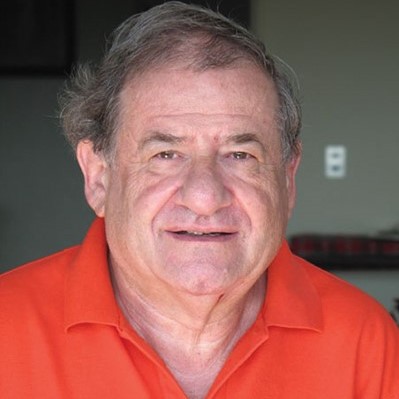Miguel Orszag
Pontificia Universidad Católica de Chile & Director of the Center for Quantum Optics and Quantum Information, Universidad Mayor, ChileFor a pioneering role in Latin-American quantum optics, studies of laser noise and cooperative effects, connection between entanglement and decoherence, and Dicke model’s properties.

While his interests originally revolved around literature, Miguel Orszag decided to study electrical engineering during his undergraduate years at Universidad de Chile in Santiago. Once there, physics really attracted his attention so he took all the available physics classes in additional to his electrical engineering courses.
After reading the work of Lorenzo Narducci, Miguel applied to graduate school in the United States and had the good fortune to have Prof. Narducci as his PhD advisor at Worcester Polytechnic Institute.
Miguel says that Lorenzo was an excellent advisor. He was “generous with his time, full of energy” and attributes some of his early success to this relationship. Miguel advises young scientists “to find a mention for whom physics is not a job, but his or her passion”.
His research currently focuses on quantum information and quantum theory of measurement. More specifically, he is working on “weak measurements” which is a new approach that involves only slightly changing the system being measured. The biggest challenge so far is to find a notable effect related to weak measurement and weak value amplification. Once one effect is found, small effects can be amplified to produce additional results.
Miguel says that the research process starts “with confusion and distress” which is not his favorite part, but “finally, with luck, you see some light, which is great.” He does not have a favorite personal scientific discovery, as he “loves physics in general” but notes a few of his own most satisfying discoveries. These include noise reduction in atomic systems, the connection between quantum correlations and coherence, and the ability to amplify small physical effects by weak value amplification. He’s also gratified by the success of his textbook Quantum Optics, published by Springer, which is now in its 3rd edition and is used as a graduate textbook at many universities worldwide.
“Quantum optics and quantum information have become probably the most important areas of physics, along with nanotechnology,” he says. The field has a strong impact on modern communications and particularly in the security of the transmitted information which is very important in today’s world. In terms of technology, developments in electronic communications are occurring every day and discoveries in quantum optics and quantum information have helped to fuel the technology. For Miguel, technology is useful to connect to other scientists, keep up with colleagues, and maintain access to libraries and journals.
“Follow your instincts and do not pay attention to what people tell you,” Miguel says when asked about advice to those wanting to become scientists and those just starting out in the field.
Profile written by Jeanette Gass
